This post has been updated as of January 2024 to include several new devices on the market and provides information on other popular wearables claiming to improve mental health, emotional regulation, or brain function.
Discover the power of at-home neurofeedback devices designed to elevate your mental health, emotional regulation, and brain function. With years of research backing the effectiveness of neurofeedback—a form of biofeedback that measures your brain waves (EEG)—this non-invasive treatment is revolutionizing the way we improve mood, focus, and performance outside clinical settings. Whether you’re seeking peak brain performance or a calmer, more focused mind, our curated list of the best neurofeedback devices of 2024 offers insights based on cost, effectiveness, and ease of use.
1. Narbis

How it works: Narbis smart glasses leverage neurofeedback and NASA algorithms for real-time attention, relaxation, and distraction tracking. With sensors on the head and behind the ears, they monitor your brainwave patterns. Stay focused, and the glasses remain clear; lose focus, and they tint as a gentle nudge back to the task at hand.
Perfect for improving mental performance, Narbis recommends two to three 20-minute sessions weekly. At $690, it supports multiple users, and includes a protective case, making it a valuable tool for enhancing cognitive function at home or on the go.
Considerations: Utilizing NASA-developed algorithms, they provide precise tracking of attention and relaxation, ensuring accurate neurofeedback. The glasses are designed to integrate seamlessly into daily tasks, facilitating improved focus without the need for screen-based distractions. Additionally, the comfort of users is prioritized with a dry electrode system, eliminating the need for pastes or gels. This system has been recently upgraded to enhance both accuracy and user comfort, further improving the overall experience of neurofeedback training.
Narbis offers a straightforward way to train your brain for better focus and relaxation, supporting mental well-being with technology based on NASA’s research.
2. Muse

How it works: Muse S, priced at $399.99, is an EEG device that caters to meditation, mindfulness, and sleep optimization. It employs advanced signal processing to interpret mental activity, providing auditory feedback to guide users. When in a state of calm, Muse S emits peaceful weather sounds, while a distracted mind triggers stormier audio cues. Notably, Muse S introduces specific programs optimized for enhancing sleep quality, making it a versatile tool for relaxation and improved sleep.
Considerations: A monthly subscription fee totaling over $150 per year is required to unlock all its features, increasing the overall investment. The sensor placement is primarily geared towards meditation and sleep enhancement, which may not be as effective for active focus and productivity tasks. Additionally, Muse S is designed for use with eyes closed and relies on audio feedback, limiting its utility in situations where visual engagement or open-eye activities are involved.
3. Sens.ai

How it works: Sens.ai offers a unique combination of neurofeedback and light therapy to support mental wellness. It maps brain frequencies to specific cognitive states, providing users with diverse programs to enhance mental states. Each program, accessed through the Sens.ai headset and app, consists of sessions lasting around 20 minutes. Users can choose individual sessions or follow one of 16 Missions for structured progression. Sens.ai emphasizes quantifiable biometric feedback, allowing users to track their improvement over time.
Considerations: The cost of the headset, at $1,195, plus the need for individual memberships, represents a significant investment. The headset’s size and design may not be suitable for everyone, particularly those with smaller heads or children, due to its bulkiness. Additionally, the required time commitment for Sens.ai sessions could be a drawback for individuals with tight schedules or those preferring more flexible wellness tools.
4. Mendi

How it works: The Mendi headband, priced at $299, offers a unique neurofeedback experience using Hemoencephalography (HEG) technology. Unlike traditional EEG-based systems, Mendi focuses on measuring oxygenated blood flow and neural activity. Users engage with a specially designed training game where they can visualize their brain activity. By concentrating, they control the game, achieving goals like elevating a ball, thereby turning focused brain activity into a playful and interactive exercise.
Considerations: Mendi uses HEG technology, which differs from the EEG methods commonly used in neurofeedback, focusing more on blood flow dynamics rather than specific brainwave patterns. Mendi requires users to actively participate in gaming sessions, which might not fit seamlessly into a busy schedule or for those preferring more passive neurofeedback methods. The interactive gaming aspect, while engaging, may not align with every user’s preference for neurofeedback experiences, especially for those seeking less interactive or more traditional meditation-like sessions.
5. Neurosity
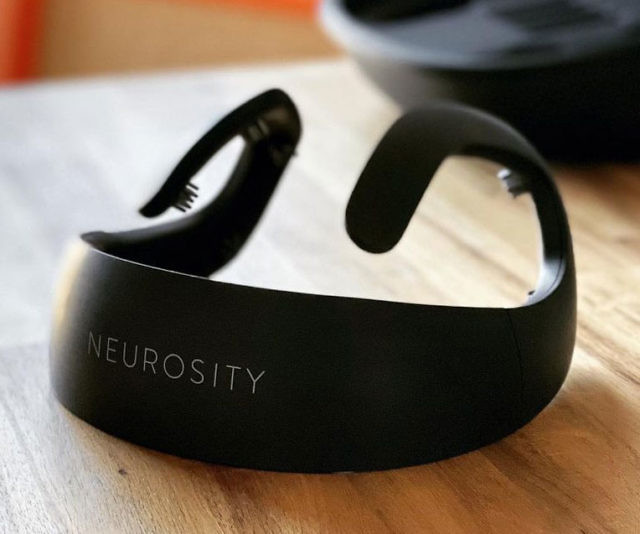
How it works: The Neurosity Crown leverages EEG technology to track brain activity, emphasizing gamma wave monitoring for cognitive enhancements. This device offers insights into mental performance and well-being, aiming to improve focus and relaxation through non-invasive means. It features audio and haptic feedback mechanisms to guide users through their cognitive training sessions.
Drawback: Its focus on gamma brainwaves means it might not suit everyone’s needs for cognitive enhancement or mental health improvement. Additionally, the device’s cost, exceeding $1,000, marks it as a significant investment in personal neurotechnology. Furthermore, the Crown’s reliance on audio and haptic feedback for user interaction could be less intuitive for some, especially those who prefer visual feedback for cognitive training exercises.
6. Enophone
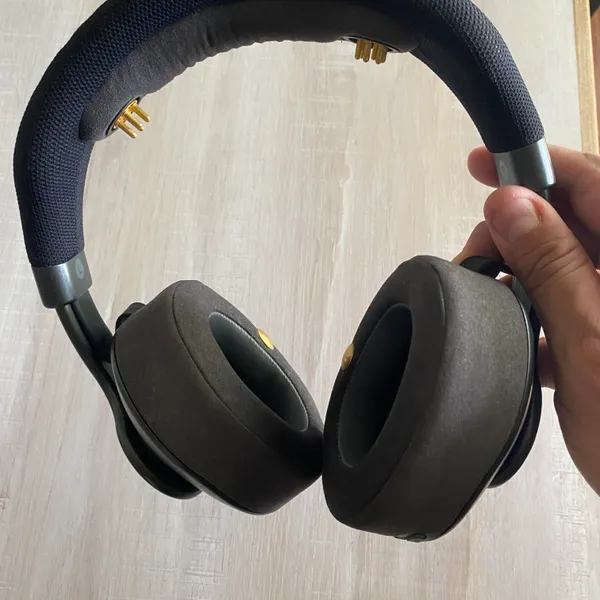
How it works: The Enophone combines music with EEG brainwave monitoring to enhance focus and productivity. It includes EEG sensors that track real-time brain activity and pairs with an app for a customized musical experience. Unlike traditional neurofeedback tools, the Enophone immerses users in an auditory environment designed to optimize mental performance.
Considerations: The metal pins on the headset may be uncomfortable for some users. Additionally, the device’s focus on music-enhanced productivity may not suit those who prefer silence or their audio choices while working. Compatibility with the Enophone app and a stable internet connection are prerequisites for the full experience. For users seeking conventional neurofeedback training, note that the Enophone’s emphasis on music and productivity enhancement differs from traditional methods targeting broader aspects of mental health and cognitive function.
7. NeurOptimal

How it works: NeurOptimal is an advanced neurotechnology designed for clinical use to enhance brain function. Each session involves wearing ear clips and small sensors on the head’s sides to capture subtle brain electrical activity. While relaxing with closed eyes and enjoying music or a movie, NeurOptimal rapidly processes your brain signals. If it detects any signs of instability, the music or movie briefly pauses .
Considerations: NeurOptimal offers advanced brain training but is primarily designed for clinical use. It comes with a significant price tag at over $10,000, making it a big investment. Applying the sensors requires the use of paste, which some users may find inconvenient. Additionally, NeurOptimal sessions may disrupt your daily routine, as they involve setting aside time for music or movie sessions.
8. NeuroSky

How it works: NeuroSky’s MindWave Mobile 2 and Excellent Brain headsets have the user watching games and/or videos to learn how to focus. It is low cost at $129.99 using a single AAA battery.
Drawback: As with other video-game-based wearables, NeuroSky requires users to take time out of their day to play a game. In addition, NeuroSky’s single sensor, which is placed on the forehead won’t result in optimum focus training. A sensor placed on top of the head (like Narbis, and which is s generally considered clinically efficacious among professionals) and one behind each ear is the ideal placement when detecting EEG activity specific to a focused state.
9. FocusCalm
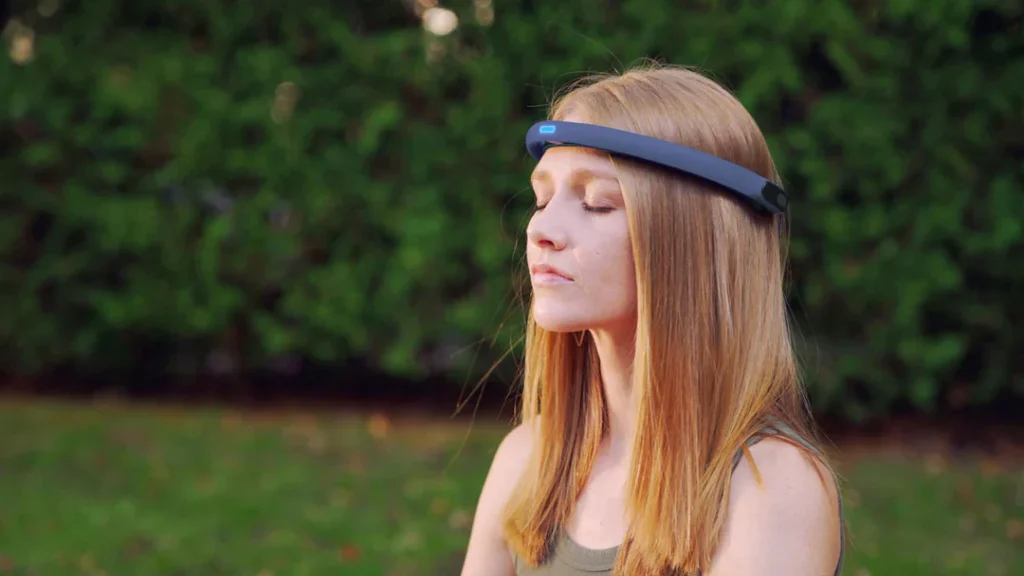
How it works: FocusCalm is an EEG-based headband that assesses brain activity and provides a range of games, exercises, and meditations to enhance focus and promote relaxation. The headband is priced at $349.99, with a monthly subscription of $9.99 per person. It utilizes EEG technology to monitor brain electrical signals, offering activities designed to enhance cognitive performance.
Considerations: While FocusCalm introduces an innovative approach, it lacks comprehensive data on its effectiveness, raising questions about its long-term benefits. Users may find the limited training screens and simplistic games becoming less engaging over time, potentially affecting motivation for regular use. Additionally, FocusCalm’s focus on a narrow range of mind states may not cater to everyone’s cognitive enhancement requirements.
10. Myndlift
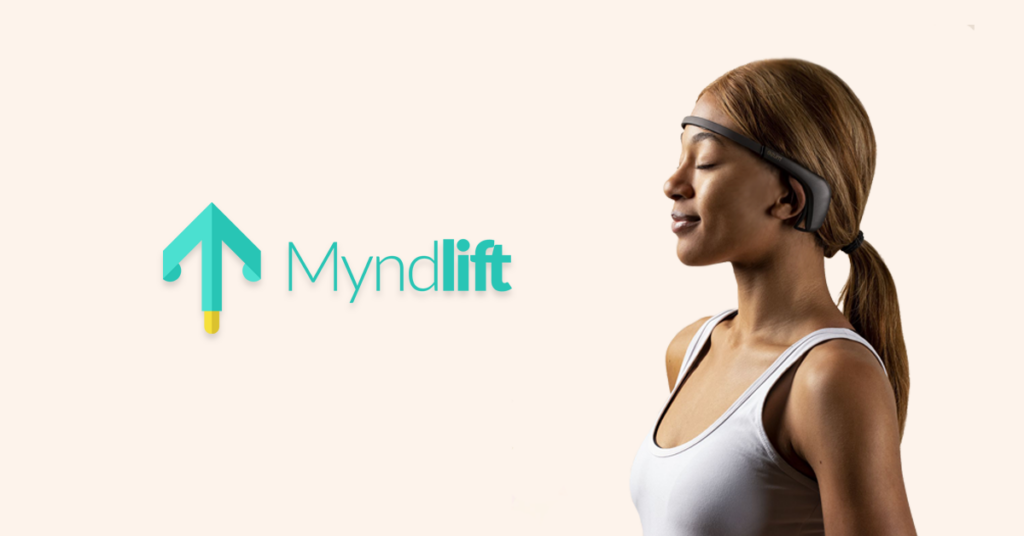
How it works: Myndlift utilizes the Muse headband and an intuitive app to deliver tailored neurofeedback sessions focused on improving concentration and reducing stress. Users receive real-time feedback while engaging in activities such as watching videos, offering a convenient approach to enhance mental well-being.
Considerations: The system relies on wet electrodes, requiring the application of conductive gels or pastes. This setup may be somewhat messy and precise, potentially posing a challenge for some users. Additionally, the program comes at a cost, with an annual expense of up to $1,800, in addition to the initial investment in equipment. Another consideration is the potential increase in screen time, as users need their smartphones for feedback during various activities.
Honorable Mention
The following wearable devices are worth including in this round-up given their rising popularity and claims to enhance focus, reduce stress, and boost overall emotional regulation.
FisherWallace

How it works: The Fisher Wallace device (worn as a headband) stimulates the brain to produce serotonin, endorphins, and melatonin while lowering cortisol. It claims to modulate brainwave activity and regulate the “fight-or-flight” sympathetic nervous system without the serious side effects of medication.
Considerations: The Fisher Wallace device is only approved for anxiety, depression, and insomnia, and works best for only certain subtypes of the listed disorders, for example, one of its studies only included Bipolar II Depression (BD II) patients and there are reports of serious side-effects.
Adverse reactions were reported during or following the use of a Fisher Wallace CES device, including disorientation, vestibular problems (balance, coordination, dizziness, vertigo), headaches, tinnitus, anxiety, depression, fatigue, brain hemorrhage, and death.
CES (cranial electrical stimulation) also has a long time history of producing headaches and muscle tension-related side effects after use.
CES is not recommended or approved for children.
Long-term effects are questionable; you may have to continue using the device in perpetuity to continue to experience the effects
Mightier
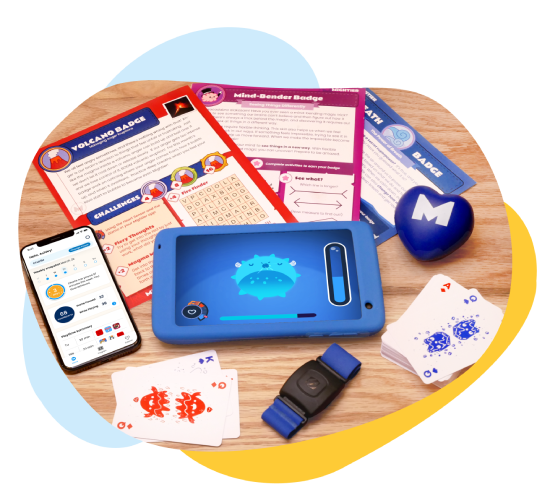
How it works: Though technically not a neurofeedback device, Mightier still deserves mention in this list given its popularity and sound scientific backing and innovative use of biofeedback to help kids regulate stress. Mightier is the result of a decade of research and development done at Boston Children’s Hospital and Harvard Medical School.
Kids wear the Mightier Monitor ($40/month) and see their heart rate as they play. When their stress increases, the games become more challenging. Then, Mightier calming techniques help kids discover their emotional superpowers. Mightier rewards emotional strength as the games become manageable again. This is part of the science behind Mightier which elevates a child’s awareness of their emotions and provides them with the skills to lower their stress during play. The idea is that kids begin to realize that they have always had this ability and start using it in real-life situations.
What does emotional strength look like? Kids begin to respond with confidence in situations that used to cause eruptions.
Considerations: Users are forced to interrupt the day by having to set aside time to play video games.
Omnipemf

How it works: Although it’s not a neurofeedback device per se, Omnipemf is based on PEMF, or Pulsed Electromagnetic Field, a school of therapy that relies on sending electromagnetic pulses to provide relief. As the maker of the tool says, the headset emits radio frequencies specific to the wearer’s desired state of mind, whether it’s focus, sleep, or relaxation. The line of thinking goes that the brain will sync with this frequency, resulting in, say, focus.
Considerations: Omnipemf doesn’t train the brain how to focus or reach peak performance. Rather than build skills on how to focus, the headband must be worn to get into that state.
Thync

How it works: Thync is not a neurofeedback tool. Rather, its FeelZing product is an “energy patch” that relies on non-invasive external neurostimulation as a way to coax the brain to pay attention or focus. Applied behind the ear for a seven-minute session, Thync claims wearing the patch will help the wearer gain focus and perk up for as long as four hours.
Considerations: The boost is only temporary. Moreover, the energy patches operate on external neurostimulation, rather than on neurofeedback, a field of neuroscience backed by decades of research.
Conclusion
The surge in popularity of neurofeedback devices that offer brain training through tablet or smartphone games is unmistakable. The preference for home-based solutions stems from a growing interest in personal well-being, the rise of remote work, and the convenience and cost-effectiveness of at-home neurofeedback treatment.
What distinguishes Narbis as the top choice is its unique ability to seamlessly integrate neurofeedback training into daily activities. Unlike other devices that necessitate setting aside dedicated time, Narbis smart glasses empower users to improve focus during everyday tasks such as working on a computer or reading.
The wearable technology sector is rapidly expanding, with smart devices that not only collect biodata but also leverage it to enhance well-being. This trend has the potential to disrupt the pharmaceutical industry as individuals explore non-drug alternatives for mental health and attention-related concerns. It is essential to recognize the devices that incorporate superior sensors and algorithms to ensure users derive tangible benefits from neurofeedback technology.







